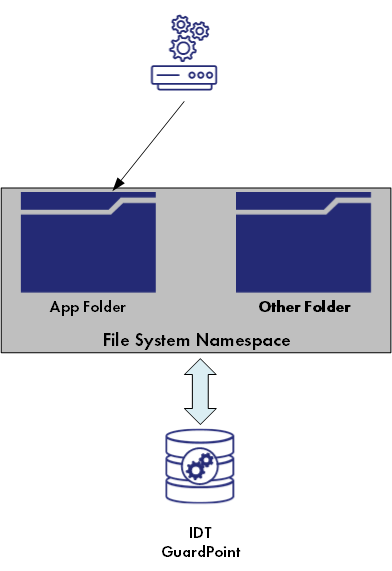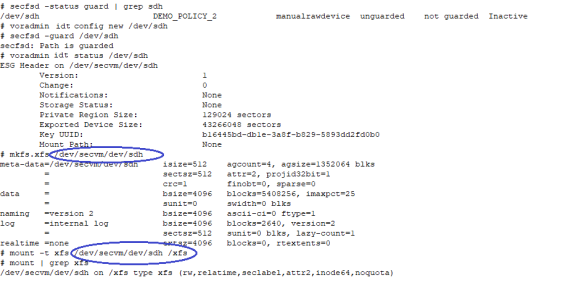Use Case 2: Device-Level GuardPoints
Protect structured or unstructured data stored in data files. The data files are organized inside one or more directories within a file system namespace, such as ext4 or XFS, without any protection on the directories or the file system namespace. In this use case, the file system resides in the device guarded as in-Place Data Transformation using a policy with a key rule and no user specified access rule. (Access rules are not applicable in this use case and should not be used.) Similar to use case 1, Linux policies supporting this use case can also specify the second key rule with an empty resource set for rekey.
File system resides in device guarded as an in-Place Data Transformation GuardPoint

Example
Below is an example of this use case where a Linux file system is created in an in-Place Data Transformation GuardPoint and then mounted. The policy used for the GuardPoint does not specify user or process-level access rules because I/O operations to the GuardPoint are from the file system module accessing the device on behalf of application I/O operations to the files inside the mounted file system.


